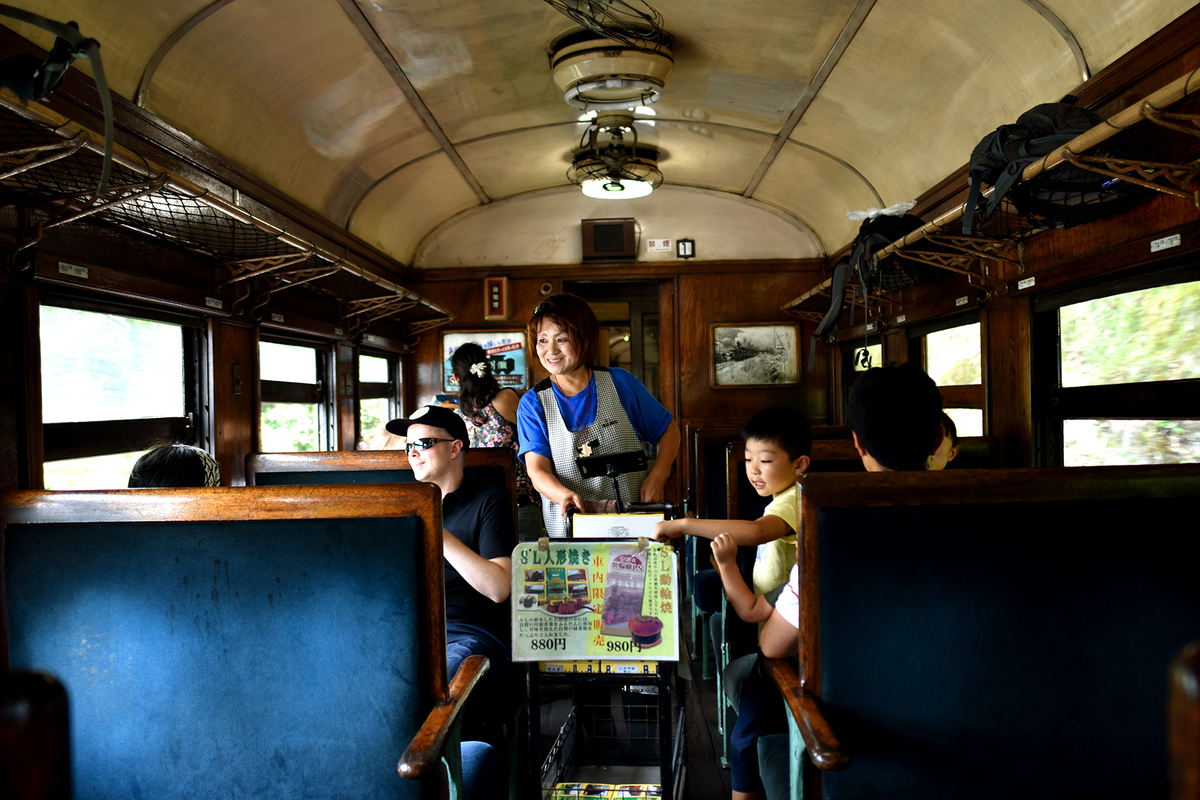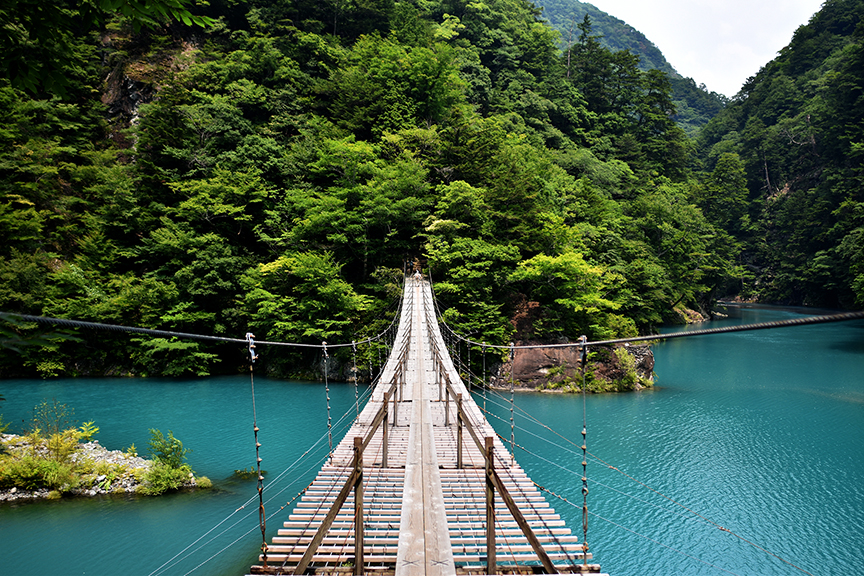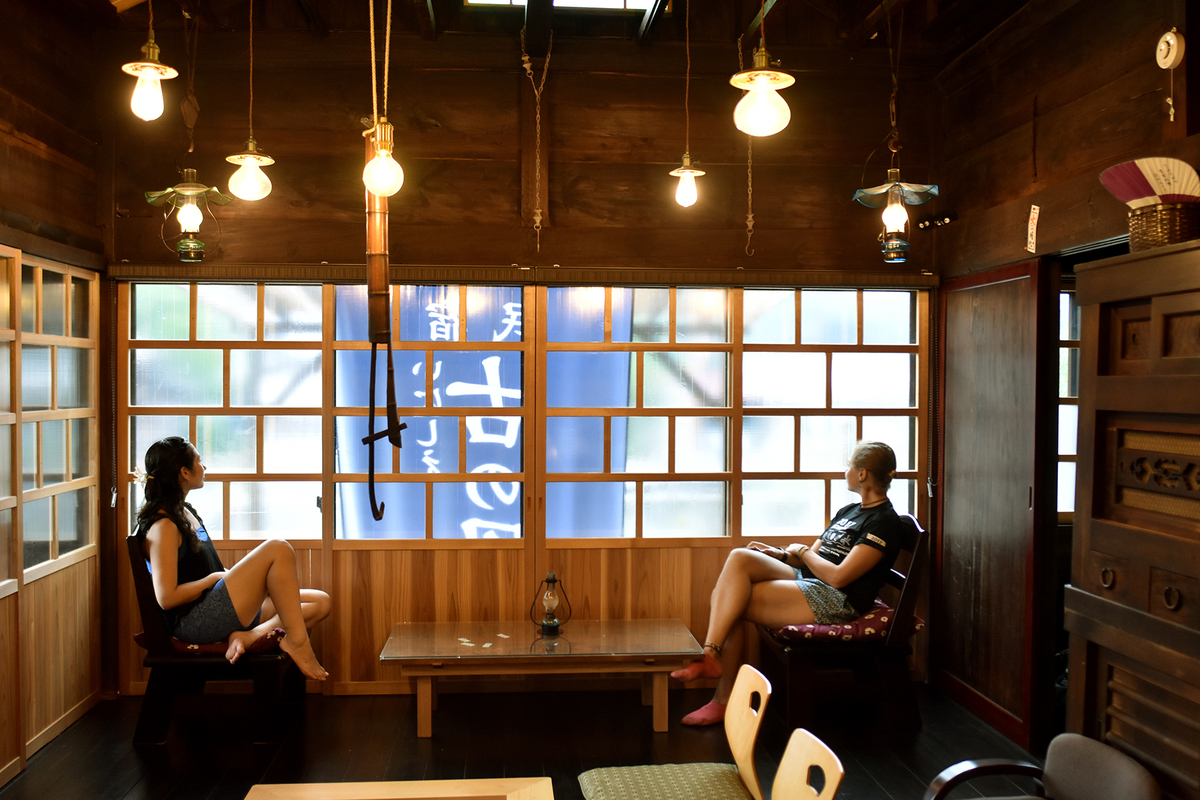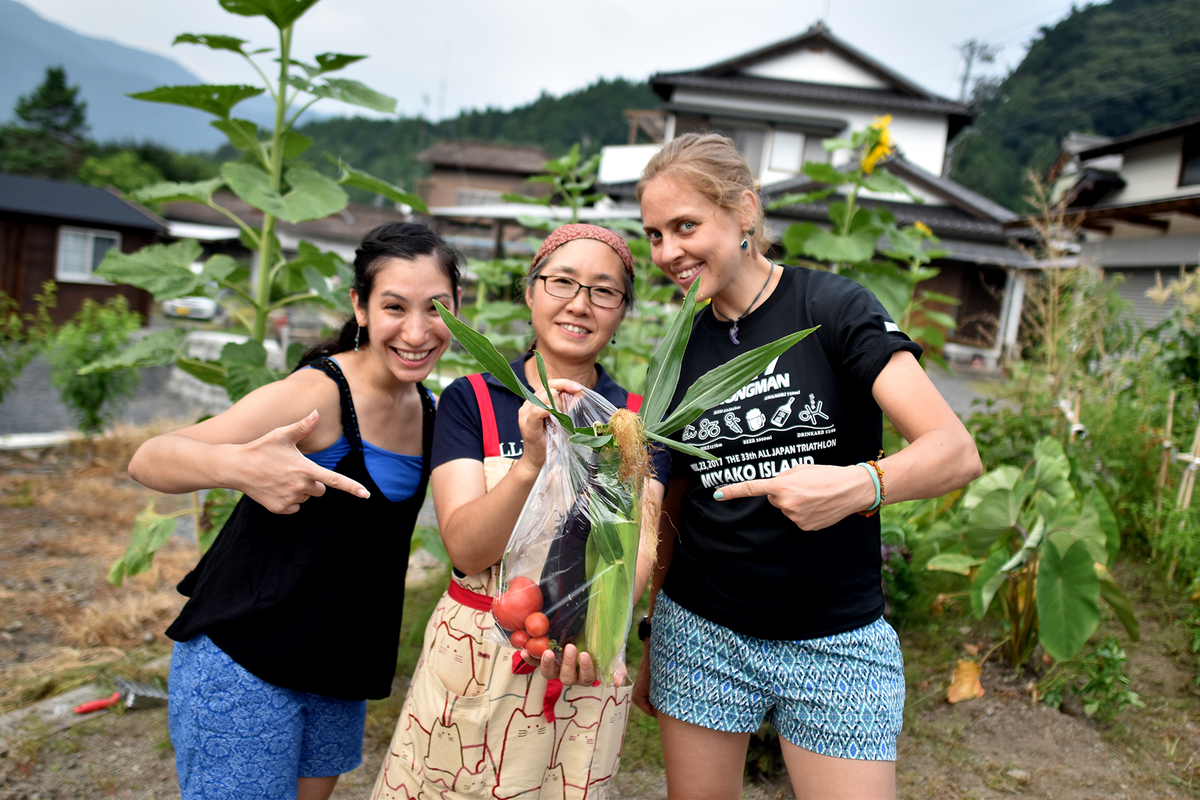A chugging sound interrupted intermittently by a shrill whistle cuts through the silence of the Okuoi Mountains. In the distance, a coal-fed locomotive crosses over a striking red bridge, past rice fields ready for harvest. For a split second, it feels like you are back in the Showa Period in Japan.

Nostalgic Kawane located in Shizuoka Prefecture’s Southern Alps is famous with trainspotters, as it is one of the last places in Japan with an operating steam locomotive. In 1976, Oigawa Railway started a project to revitalize vintage steam locomotives (“SLs”) that were built in the 1930s. Today, these trains are maintained at Shin-Kanaya Station.
From Shin-Kanaya Station, the steam locomotive departs for Senzu Station, stopping at Ieyama, Kawane Onsen Sasamado and Shimoizumi along the way. After the conductor punches your ticket, sit back on velvet seats and enjoy an ekiben (lunchboxes you can buy at the station) during the 80-minute ride as the scenery changes from suburbs to gorges, wide rivers and mountains. Friendly elderly women stroll down the aisle selling drinks, snacks and souvenirs you can only purchase on board.
The ride is exceptionally beautiful in spring when sakura blossoms are in bloom and autumn for kouyou (leaves changing color).
The train runs once per day (roundtrip from Shin-Kanaya to Senzu) and costs ¥2,520 one way. All seats are reserved and sell out fast, so check the schedule and purchase tickets beforehand.
Bridge over Turquoise Waters

Once you’ve arrived at Senzu Onsen, take a 30-minute bus ride to Sumatakyo Onsen. Hike an easy three-kilometer trail into the valley to the “Bridge of Dreams,” a suspension bridge constructed eight meters over an impossibly turquoise river. The water is so clean only blue light with shorter wavelengths is reflected and red light (longer wavelengths) is absorbed.
Although sturdy, this 90-meter shaky bridge holds only up to eleven people at once so expect a line on busy weekends. It is said that if you wish for love at the middle of the bridge, your romantic dreams will come true. Even if you don’t meet the love of your life here, at least you’ll be treated to a surreal view of Sumatakyo Gorge’s vibrant blues and greens.
Back at the trailhead is Sumatakyo Onsen, where you can stop for soba (buckwheat noodles) topped with local vegetables, sticky yam mochi (rice cakes) with miso sauce and Kawane’s famous tea. The hot springs in the village are famous for their restorative benefits and nick- named “Bijin-no-Yu,” literally translated as “Beautiful People Hot Spring” as it moisturizes and beautifies skin.
Farm-to-Table Dining with Locals
Although the region has jaw-dropping views, Kawane Honchou’s charm lies in its local residents. In 2011, Kawane Green Tourism was launched to support five minshuku (traditional bed and breakfasts) where visitors stay with locals and experience countryside farming.

A typical evening at a minshuku is spent harvesting vegetables from the farm outside the inn for your meal then learning home-cooked favorites like tempura from your host. Friendly neighbors might stop by with leftover fruits from their orchard or seasonal pickles. It may be helpful to have a translation app at hand as most hosts only speak Japanese. Minshuku are comfortable but know that you will be staying with residents, so there’s usually a noise curfew. Showers and baths are often shared among several rooms and guests sleep on futons. The inns are spread out among the region with several being located high up in the mountains, so hosts will pick up and drop off at Senzu Station.

Getting There
The best way to get to Kawane from Tokyo is to take the Tokaido-Sanyo bullet train to Shizuoka Station. From there, take the local train to Kanaya Station then transfer to Shin-Kanaya. Although most travelers would prefer to explore this area by riding the retro trains or using the bus, rental cars are also available.
For more information on Shizuoka, visit Explore Shizuoka.
